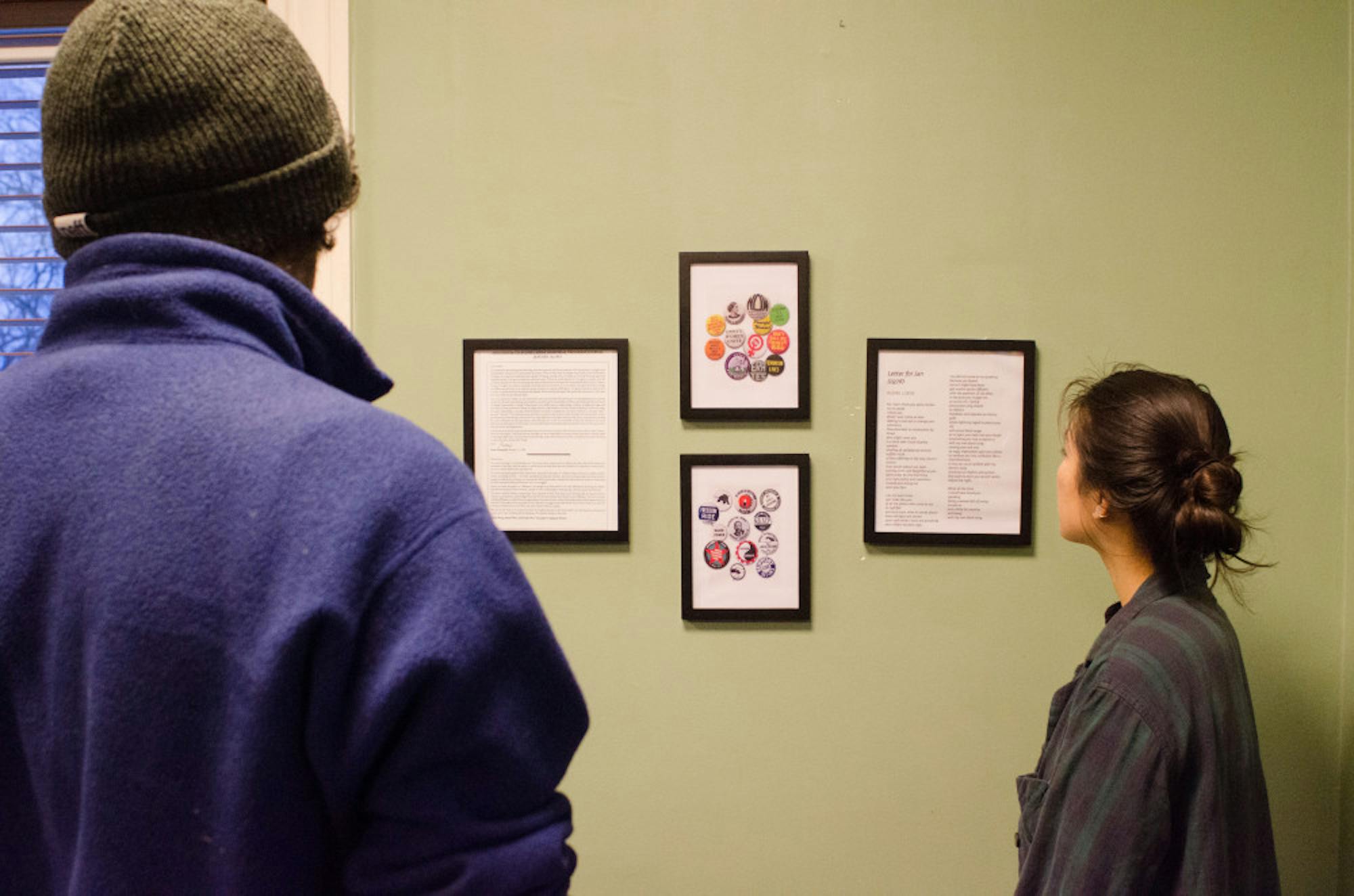The Audre Lorde Traveling Exhibit opened last Thursday, Feb. 25 at the LGBT Center. The exhibit has returned to Boston for its final showcase, where it was originally displayed as a part of the 1990 “I Am Your Sister” conference honoring Audre Lorde — the author, poet, activist and woman. The exhibit will remain open at the LGBT Center through April.
The opening event featured the original exhibit as curated by Morgan Gwenwald and Audre Lorde, as well as the presentation of the research and work from the organizing students: Maya Zeigler, Vanessa Pinto, Cecilia Vaught and Arturo Munoz. The four met in their Radical Lesbian Thought class taught by Professor Sabina Vaught of the Department of Education in spring 2015. Their work “spanned over a year’s convergence of human and intellectual background,” Munoz explained when introducing the group.
A significant portion of their research, as well as the artifacts and exhibit itself, came from the Lesbian Herstory Archives based out of Brooklyn, NY. The students visited the archives twice during their year of research. On their second visit, Munoz and Zeigler set out to find some of the important locations — mostly lesbian bars in the Bronx referred to in the exhibit — using a map provided by the archives. In these places, black lesbians could find other people to “produce collectivity with, love with, identify with,” Munoz said at the opening.
“We couldn’t find any one of them," Zeigler said. "Not a single one.”
“[It] makes sense, in the current context,” Munoz added.
The exhibit is not initially visually striking; taking photographs is banned, as requested by Lorde, and the panels and artifacts often include heavy blocks of text. Visiting the space requires time, patience and tenderness — to read yellowing zines, flyers and edited manuscripts and sift through protest buttons — but the time spent is well rewarded. The exhibit, through the life and work of Lorde, allows its visitors to walk into a space dedicated to a history, a movement and lives that are often erased.
At the LGBT Center, the exhibit features a set of panels with personal photographs selected by Audre Lorde of her own private life, alongside artifacts and photographs from the Lesbian movement in New York City selected by the students.The integrity of Lorde and Gwenwald’s selection is maintained through the division of the objects into two rooms. The first, the Green Room, features a series of artifacts and writings that the students found in their research. The works help ground Audre’s exhibit next door in the Purple Room.
Artifacts exhibited around the Purple Room, such as the Lesbian Avenger Flyers for the 2003 Dyke March and a collection of buttons from the civil rights movement and the '70s feminist era, have incredible meaning both in the present and in their current setting, Zeigler explained. Zeigler’s own research focused on the use of media and buttons in this movement.
“Something that is seemingly useless and tiny as a button can have so much significance for a group that had so little to work with,” Zeigler said.
Audre Lorde herself has gained a significance beyond what is directly related to her personal life or even her written work, Cecilia Vaught said. While Pinto explained that to think about Audre Lorde, you need to “think of her not only as a black woman, but as a black lesbian woman,” which makes “her existence inherently political,” she added. This politicization of the very existence of a woman, transforms her into an icon.
On one side of the room, there is a picture of Lorde sitting in the sand. Diagonally, an old black and white print of her as a child, wearing a ruffled white dress. Across from that is a collection of her written work and photographs participating in protests.
The struggle to reconcile Audre Lorde — the poet, theorist, activist, teacher — and Audre — the lover, partner, friend and individual — is evident both in the work of the students and in the tension that emerges from the exhibit in our contemporary space and setting.
Vaught explained at the opening how “disjointed [our] understanding of what a 'queer' icon is.” The current understanding exists divorces from the reality, terminology and conditions that Lorde worked and lived in.
“It’s sometimes hard searching for an imagined entity that one wants to identify with — we identify spiritually, we identify politically," she explained. "It gives us a sense of collectivity.”






